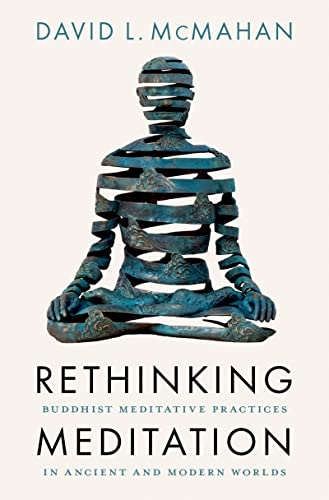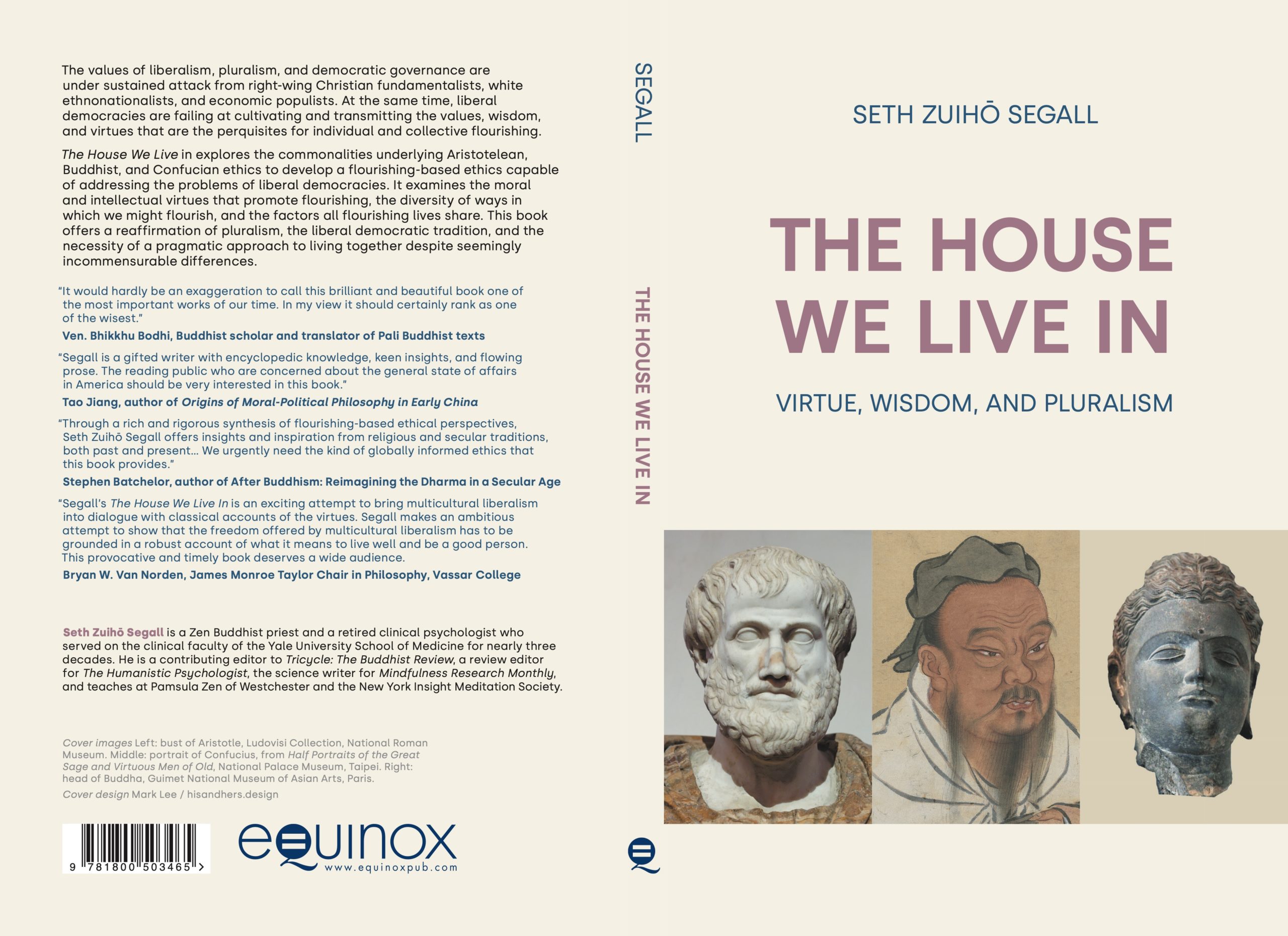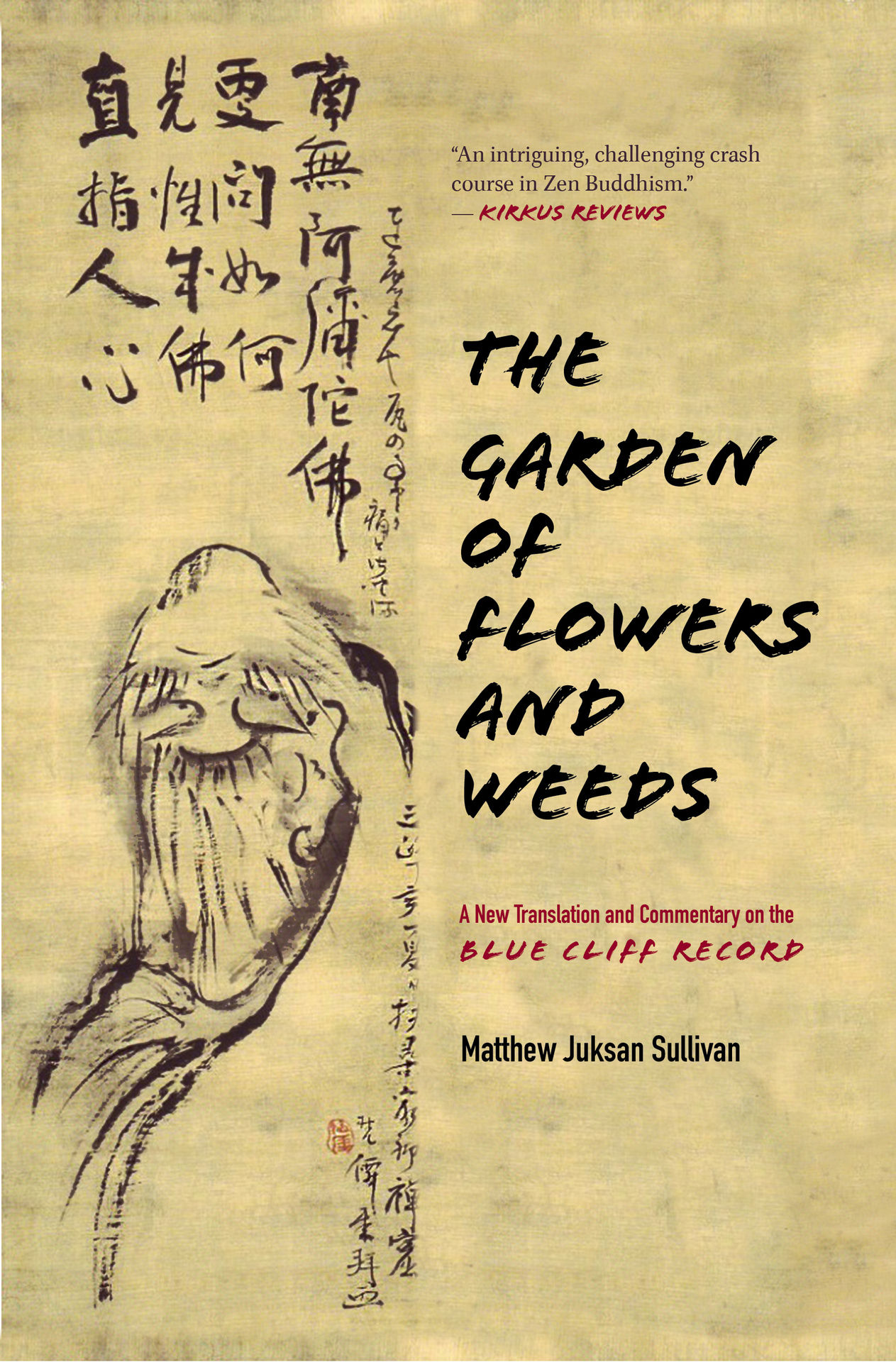It is hard to know how to even begin to review of a book of the beauty, depth, nuance, and complexity of David McMahan’s excellent Rethinking Meditation: Buddhist Meditative Practices in Ancient and Modern Worlds (Oxford, 2023). David’s previous...
It is hard to know how to even begin to review of a book of the beauty, depth, nuance, and complexity of David McMahan’s excellent Rethinking Meditation: Buddhist Meditative Practices in Ancient and Modern Worlds (Oxford, 2023). David’s previous book—his seminal The Making of Buddhist Modernism (Oxford, 2009)—is undeniably the most important book about Buddhist modernism written in this century, and Rethinking Meditation is destined to take its place alongside it as an indispensable classic.
Rethinking Meditation is really two books in one. The first half of the book dismantles the myth that the Buddhist meditation we practice today is the timeless practice handed down from the Buddha. McMahan demonstrates how every culture and historical era reinterprets and repurposes Buddhist practice to make it relevant to its place and time. Every culture and era has “filters” and “magnets” that de-emphasize some aspects of the Buddhist tradition while amplifying others. Thus, modern Western meditators filter out classical Buddhist themes that are incongruous with late modern Western culture (e.g. rebirth, the foulness of the body) and emphasize themes that are culture-congruent and relevant to the moment (e.g. interdependence, secular re-enchantment, savoring the moment). As a result the ways in which an Indian Buddhist monk in 200 B.C. understood meditation and the purposes to which he put it, and those of an American “convert” Buddhist in 2023 are remarkably different. For example, the ancient Indian monk contemplated the foulness of the body—how it was filled with phlegm, pus, and bile—and engaged in charnel ground meditations to watch bodies decompose in order to disenchant himself with and disidentify himself from his body. Modern mindfulness meditators, on the other hand, engage in the body scan to experience the body more fully, to re-inhabit and become more intimate with it, and live a fully embodied life
McMahan also dismantles the idea that meditation is like a “science of mind” that enables practitioners to objectively discover the “way things really are”— the true, unchanging nature of reality. McMahan describes how the various mental maps offered by the different schools of Buddhism help shape and limit the kinds of insights practitioners are likely to discover through meditation. These maps include the Abhidharma lists of mental states, the eight jhanas, and innatist views on uncovering/actualizing an already existent Buddha-nature. It makes a great deal of difference whether one thinks one becomes a Buddha through developing and embodying certain views, mental states, attitudes, and competencies (e.g. the paramitas and brahma-viharas) or whether one views enlightenment as an uncovering and realization of the Buddha one already is. McMahan is nuanced here, however, and also raises the possibility that meditation also has a deconstructive potential to liberate thinking from pre-established categories—the possibility suggested by Nagarjuna’s tetralemma and Zen’s admonition to go beyond “words and letters.” Thus different strands of the Buddhist tradition both constrain and liberate discovery. What meditation will show you depends on how you think about meditation. But even when meditation encourages us to transcend our categories, we are all still limited by our social imaginaries, our conditioning, our mental habits, and the constraining visions of our traditions.
In exploring the deconstructive potential of meditation, McMahan gives a brief historical survey of the Prajnaparamita and Madhyamaka traditions. If I have one nit to pick with McMahan here, it is that he relies too heavily on the mainstream Western scholarly interpretive tradition that can be traced back to translator (and Theosophist) Edward Conze. That tradition has attracted critical attention from scholars (Jayarava Attwood and Matthew Orsborn) who question Conze’s translations and interpretations. I am not an expert and have no idea who’s right in this dispute. Perhaps more importantly, the rightness or wrongness of this interpretation does not affect McMahan’s key points. McMahan is a scholar of modern Buddhism, not Indian Buddhism, and relies on others for his information here, but readers should be aware he relies on mainstream scholarly opinion which may be subject to revision.
In explaining how our ideas about mediation change, McMahan emphasizes the social imaginaries that define the ideas and practices that are possible within any particular culture and time. To make his point, he describes how psychiatric illnesses manifest differently in different historical eras depending on changes in the social imaginary—for example the malady of “grand hysteria” that characterized much of 19th century psychiatry—the illness described in great detail by Charcot, Janet, Freud, and Breuer—is a relative rarity today, whereas contemporary clinicians are more likely to encounter patients with borderline personality disorder. There are connections that link 19th Century hysteria with 20th Century borderline personality disorder—they may be variant expressions of the “same” disease—but that is just the point—there is no “same disease”—there are just different possibilities provided by cultures for the expression of symptoms given similar tragic life histories. In one rare error, McMahan writes that chronic fatigue syndrome and anorexia nervosa are “newer” conditions that didn’t exist in the 19th century. But chronic fatigue was around in the 19th Century when it used to be diagnosed as neurasthenia, and Janet devoted a full book chapter to describing anorexia nervosa in 19thCentury French patients. But interestingly enough, Janet’s patients never described wanting to be thin as their motivation for stopping eating. The disease symptomatology was otherwise the same as it is now, but in that one respect, it was different: another example of McMahan’s point that diseases change with changes in the social imaginary. We can forgive McMahan his minor historical error—psychiatry is not his area of expertise. And his main point—how possibilities for expressing illness change with the social imaginary—is undoubtedly correct. And his point about changing psychiatric presentations was really just offered as an example of how similar kinds of social processes might also affect meditative practice.
In the final part of his book, McMahan explores three aspects of late modern culture that strongly affect contemporary understanding of meditation and Buddhist practice: the ethics of appreciation, authenticity, and autonomy. We can understand how the value of appreciation affects modern Buddhism when we consider how mindfulness meditation is oriented towards discovering the pleasures of embodiment, the savoring of the tastes of food, “stopping to smell the roses,” and discovering new satisfactions in mundane repetitive tasks such as doing the laundry. We see it also reflected in the title of Maezumi Roshi’s book, Appreciate Your Life: The Essence of Zen Practice. This ethic of appreciation is not something we find in early Indian Buddhism but it characterizes a good deal of modern Buddhism in East Asia and the West.
The ethic of authenticity is reflected in the idea that we have an authentic self (as opposed to a socially-conditioned self) that needs to be uncovered, actualized, and expressed. We see this ethic reflected in the idea that meditation involves “going within” to discover one’s genuine self. Of course, early Indian Buddhism insisted there was no such thing as an essential or unchanging self.
The ethic of autonomy involves what philosopher Charles Taylor calls the “buffered” self—a self that is self-determining and individuated from family and culture—an independent rational observer in control of his or her appetites and desires and able remain unperturbed by untoward life circumstances. We see this reflected in the idea that meditation builds inner Imperturbability and peace regardless of external circumstances, and that we are responsible for our own happiness.
McMahan suggests that we replace the idea of the autonomous self with what he calls “situated autonomy”—the acknowledgement of our embeddedness in social structures, and the simultaneous acknowledgment that practices like meditation can enhance our agency through increasing our awareness of possibilities McMahan points out there are aspects of the Buddhist tradition that mitigate against this autonomous self. The inner citadel model of the self is in conflict with late modern perspectives on the plural, contingent, dialogical, and interdependent nature of selves—perspectives that dovetail with traditional Buddhist views on non-self, dependent origination, and emptiness. The interdependent self introduces the possibility of an ethical responsibility towards all beings and towards the natural environment that mitigates against the individualized buffered self. This leads to an Engaged Buddhism that is not just about feeling good but doing good—and doing good in ways that undermine systemic forms of privilege and oppression. But nuanced as always, McMahan points out that this new Buddhist interdependence is a modern secularized variant—it aims at a better world in this life rather than a future life, or though transcending the world completely to arrive at nirvana.
I have not sufficiently commented on the beauty of McMahan’s prose. There are very few academic writers who write as beautifully as he does—at times lyrically and poetically—and yet never losing precision, complexity, and nuance. You will want to read this book all at once, but the ideas are complex enough it ought to be read slowly.
Rethinking Meditation is a book you will want to have on your bookshelf. It examines “traditional” Buddhist and secular mindfulness rhetoric and will help you think more clearly about how the changing nature of meditation is affected by historical, social, and cultural contexts.












